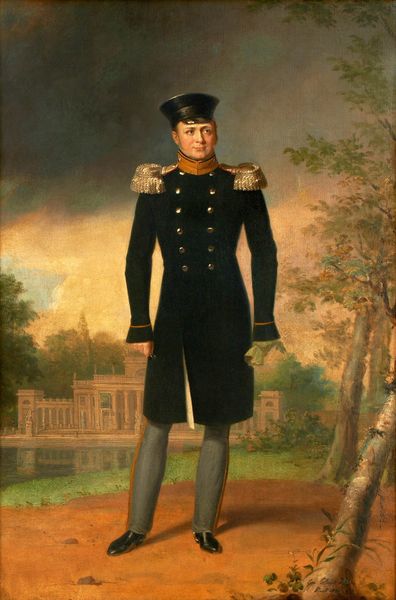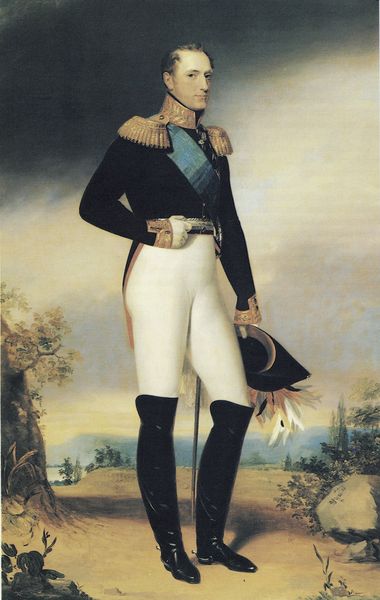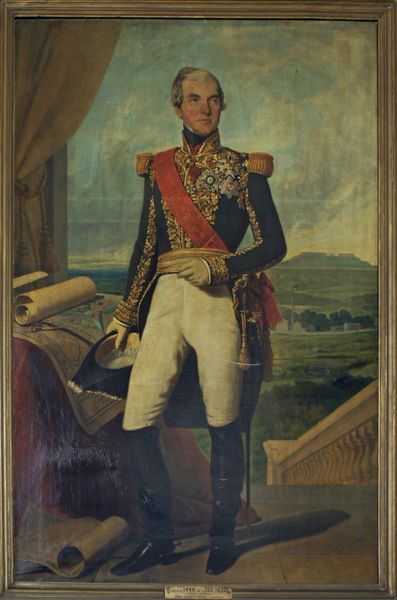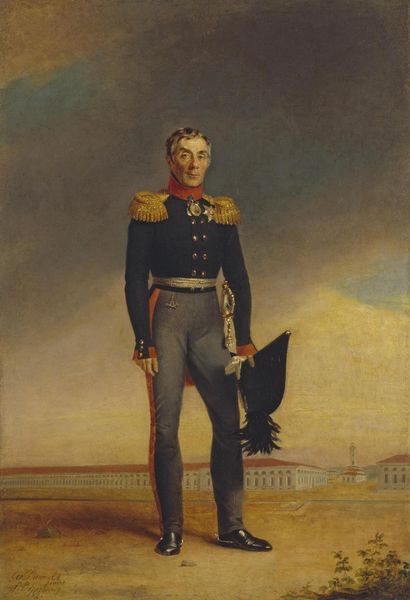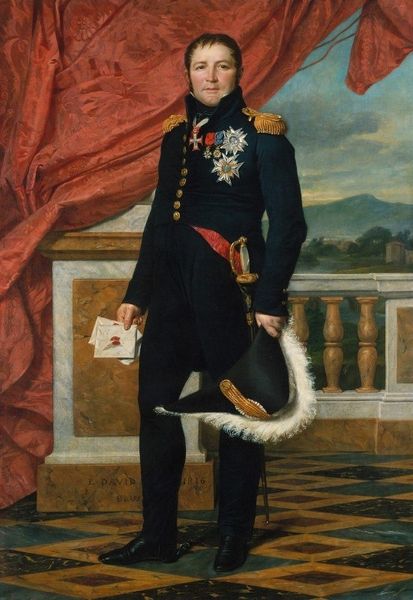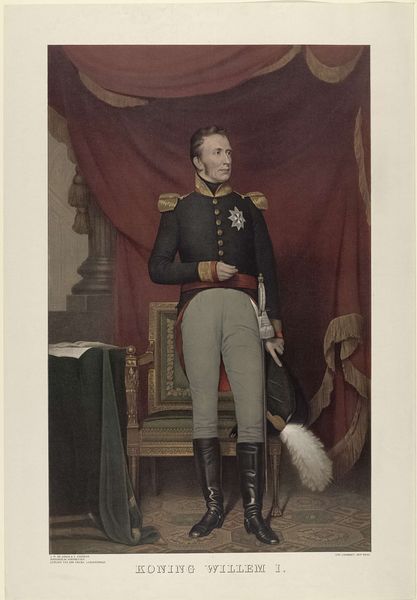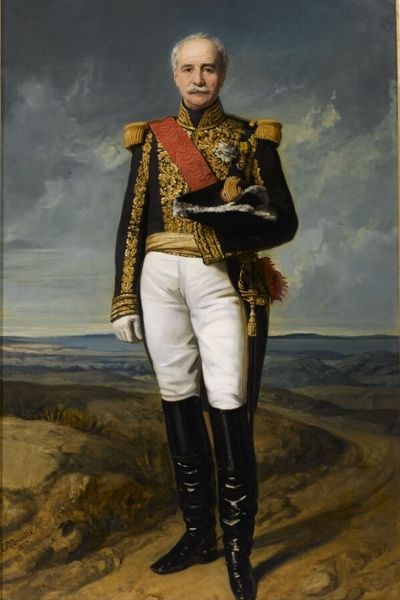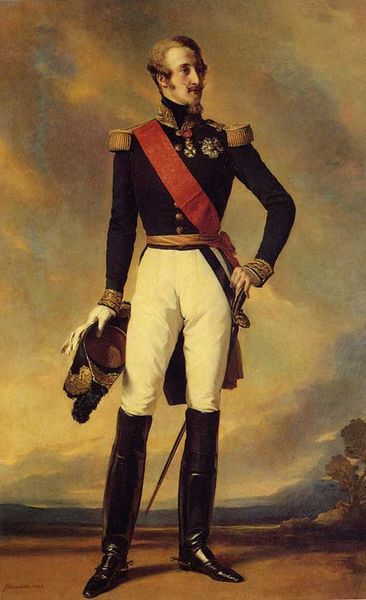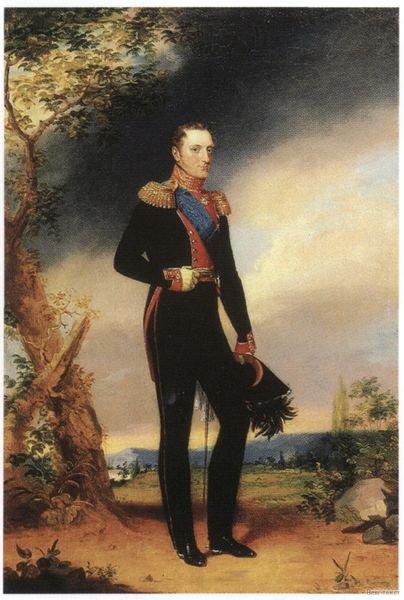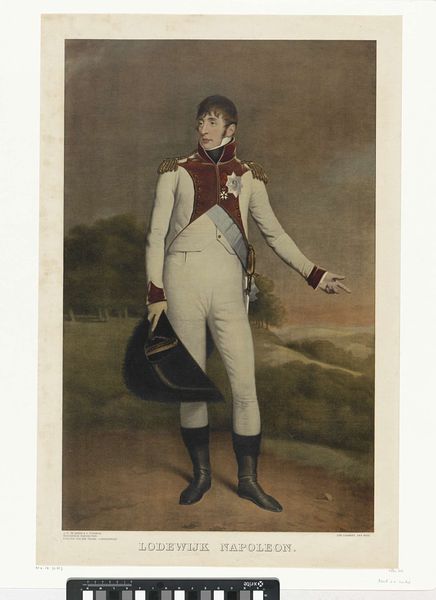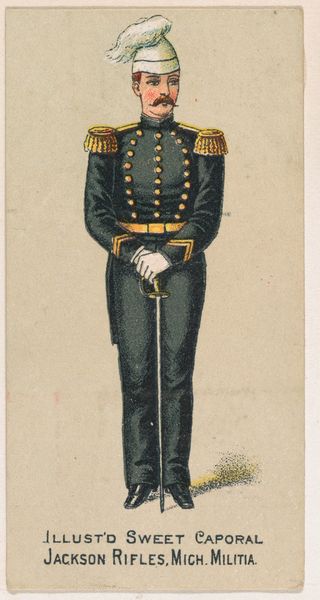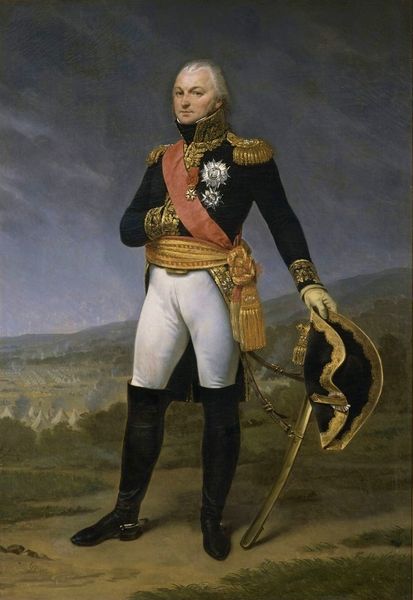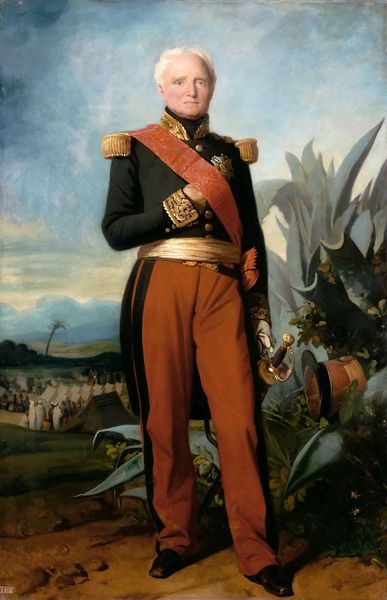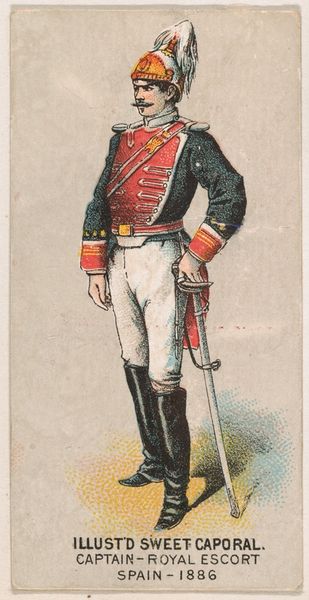
painting, oil-paint
#
portrait
#
painting
#
oil-paint
#
romanticism
#
history-painting
#
academic-art
#
portrait art
Copyright: Public domain
Editor: We’re looking at George Dawe's 1825 "Portrait of Imperator Alexander I of Russia," rendered in oil paint. It strikes me as a somewhat melancholy portrayal, the darkness of his uniform contrasting sharply with the brighter landscape behind. How do you interpret this work, especially its use of symbols? Curator: Indeed. Consider how the trappings of power – the ornate epaulettes, the severe uniform – serve as a kind of mask. Beneath that, do you see a weariness in his eyes? The turbulent sky might represent the internal storms or perhaps the geopolitical instability of the time. Note also the somewhat idealized landscape in the background; what significance might that hold, do you think? Editor: I hadn't thought of the landscape as idealized, more as a conventional backdrop for portraits of the time. Is it meant to evoke a sense of stability, a contrast to the potential "storms"? Curator: Perhaps. But every element, including what may seem conventional, contributes to the image's symbolic weight. The artist is playing with visual cues related to leadership, legacy, and even perhaps, sacrifice. Think about the psychological weight of leadership, the burden of representing an entire nation. Isn't that palpable here, communicated through color, composition, and the subject's very bearing? Editor: So the darkness isn't just aesthetic; it's about conveying something deeper, about the burdens of ruling? Curator: Precisely. Dawe uses visual symbols to communicate the weight of history and the individual's place within it. That’s what I find fascinating, isn't it? Editor: Definitely gives me a lot to think about. I didn't realize how much a portrait could convey beyond just a likeness. Curator: The best portraits become mirrors, reflecting not only the subject but also the cultural anxieties and aspirations of their time. We must not forget that.
Comments
No comments
Be the first to comment and join the conversation on the ultimate creative platform.
